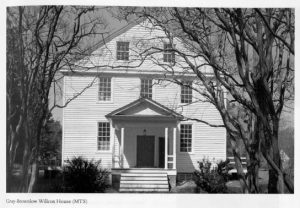
Tippoo S. Brownlow, owner of the La Vallee Female Seminary, placed this advertisement recruiting students to his new school in an 1836 issue of the North Carolina Standard. The school was in operation from 1833-1850, and was located between Halifax and Warrenton, North Carolina. The La Vallee Female Seminary was run out of a small building behind what is now known as the Gray-Brownlow-Willcox House. The school building had two floors in which there would have been space for classes to be conducted and for students to eat meals and socialize, and an attic area which was likely the living quarters for the students. La Vallee Female Seminary was forced to close in 1850, when Brownlow could no longer support the school financially.

The La Vallee Female Seminary was benefited by an experienced staff. Brownlow had also run a school called the La Vallee Academy elsewhere in Halifax County in the late 1820s, before moving his school to the grounds of the Gray-Brownlow-Willcox House. In addition, the advertisement includes testimonies to the ability of La Vallee’s principal. Mrs. Emma McElvey had previously taught at a female seminary in Schenectady, New York, and her success in that position is attested to by no less than the mayor and the First Judge of Schenectady, the City physician, and several ministers.
It is interesting to note the course offerings at La Vallee Female Seminary. The courses one would expect to see offered at a ladies’ finishing school might include subjects like music and painting. However, La Vallee offered its young ladies courses in chemistry, astronomy, history, geography, and algebra. The course listings for music and art lessons appear at the end of the advertisement, as these courses incurred extra fees.
This advertisement comes from the oldest issue of a North Carolina newspaper that has become available on Chronicling America thus far. View the full advertisement here.

